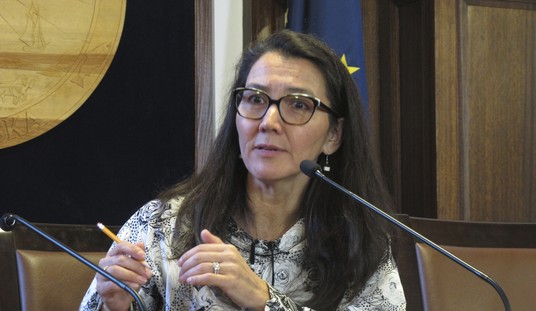
The Crucifixion, before 1450, Oil on panel
48.6 x 71.1 cm (19 1/8 x 28 in.)
The J. Paul Getty Museum, Los Angeles
From the Gospel of Saint John
So they took Jesus, and, carrying the cross himself,
he went out to what is called the Place of the Skull,
in Hebrew, Golgotha.
There they crucified him, and with him two others,
one on either side, with Jesus in the middle.
Pilate also had an inscription written and put on the cross.
It read,
“Jesus the Nazorean, the King of the Jews.”
Now many of the Jews read this inscription,
because the place where Jesus was crucified was near the city;
and it was written in Hebrew, Latin, and Greek.
So the chief priests of the Jews said to Pilate,
“Do not write ‘The King of the Jews,’
but that he said, ‘I am the King of the Jews’.”
Pilate answered,
“What I have written, I have written.”When the soldiers had crucified Jesus,
they took his clothes and divided them into four shares,
a share for each soldier.
They also took his tunic, but the tunic was seamless,
woven in one piece from the top down.
So they said to one another,
“Let’s not tear it, but cast lots for it to see whose it will be, “
in order that the passage of Scripture might be fulfilled that says:
They divided my garments among them,
and for my vesture they cast lots.
This is what the soldiers did.
Standing by the cross of Jesus were his mother
and his mother’s sister, Mary the wife of Clopas,
and Mary of Magdala.
When Jesus saw his mother and the disciple there whom he loved
he said to his mother, “Woman, behold, your son.”
Then he said to the disciple,
“Behold, your mother.”
And from that hour the disciple took her into his home.After this, aware that everything was now finished,
in order that the Scripture might be fulfilled,
Jesus said, “I thirst.”
There was a vessel filled with common wine.
So they put a sponge soaked in wine on a sprig of hyssop
and put it up to his mouth.
When Jesus had taken the wine, he said,
“It is finished.”
And bowing his head, he handed over the spirit.
I’d like to share some thoughts with you on Good Friday. For those of you who are not Catholic, bear with me. I think you’ll see that we have a lot of common ground even if the details are not in accord. And I will plead guilty, in advance, to practicing theology without a license.
Perhaps it is not unusual in a consumer society that Christmas is predominant Christian holiday but the essence of Christianity is really expressed during what we Catholics call the Triduum, that is Holy Thursday, Good Friday, and Holy Saturday, of Holy Week.
Yesterday, Christ demanded servant leadership from his disciples, effectively creating a break from the past era of high priests and a privileged priestly caste and creating a new priesthood, the nature of which depends upon your denominational beliefs. Yesterday, He also instituted the Eucharist or the Lord’s Supper (again, depending upon your denominational views). His command, “do this in memory of me,” forms the center of Catholic sacramental life.
Good Friday, though, has special significance. In addition to be a day of fasting (adult Catholics are only allowed the equivalent of one meal today. In my house we live off coffee and tea until our one meal around dusk) and abstinence (from eating meat, just wanted to make that clear before sex is brought into the discussion), it is today that we are introduced to the very symbol of our Faith, the Cross.
The importance of the Cross has been recognized from the earliest days of the Church. St. Paul, for instance, says,
For Jews demand signs and Greeks look for wisdom, but we proclaim Christ crucified, a stumbling block to Jews and foolishness to Gentiles.
The Cross divides unbelievers from believers today as much as it did two millennia ago. To the one is represents nonsense and implausibility, to the others, however, it reminds us of the ineffable wisdom of God who decided to humble Himself in human form and rather than impose His will by force, submitted to a degrading death in order to take upon Himself the sins of the world.
Unlike the God of the Old Testament who was reserved to one people, the Cross made God and His salvation available to everyone who had the faith to accept Him. Again, from the Gospel of Saint John:
But one of them, Caiaphas, who was high priest that year,* said to them, “You know nothing,50nor do you consider that it is better for you that one man should die instead of the people, so that the whole nation may not perish.”
He did not say this on his own, but since he was high priest for that year, he prophesied that Jesus was going to die for the nation, and not only for the nation, but also to gather into one the dispersed children of God.*
The Good Friday story is full of imagery that reminds us that makes it clear that Christ is the new Passover that allows God’s wrath to pass from the faithful. The wine and hyssop are a direct reminder of the Last Supper (wine as blood) and Exodus 12:22 where the hyssop is the instrument used to mark the lintels of Hebrew dwellings with blood. The fact that Christ died before it was necessary to break his legs is a reference to the preparation of the sacrifice in Exodus 12:46 and a fulfillment of the prophecy in Psalms 34.
Christ also lives the very lessons he had taught his Apostles only hours earlier. He says: No one has greater love than this, to lay down one’s life for one’s friends.
And when arrested by the authorities:
Jesus answered, “I told you that I AM. So if you are looking for me, let these men go.” This was to fulfill what he had said, “I have not lost any of those you gave me.”
Significantly, the story of Good Friday begins in a garden, Gethsemane, and ends in a garden, as the burial ground is called. This clearly links the Garden of Eden of Genesis with the New Eden that will be brought about by Christ’s Second Coming.
Through Christ, the Cross becomes a symbol, not of death and degradation, but of self-sacrifice, love, and our ultimate triumph over death. It is the very core of Christian faith and it is a day we should treasure.













Join the conversation as a VIP Member